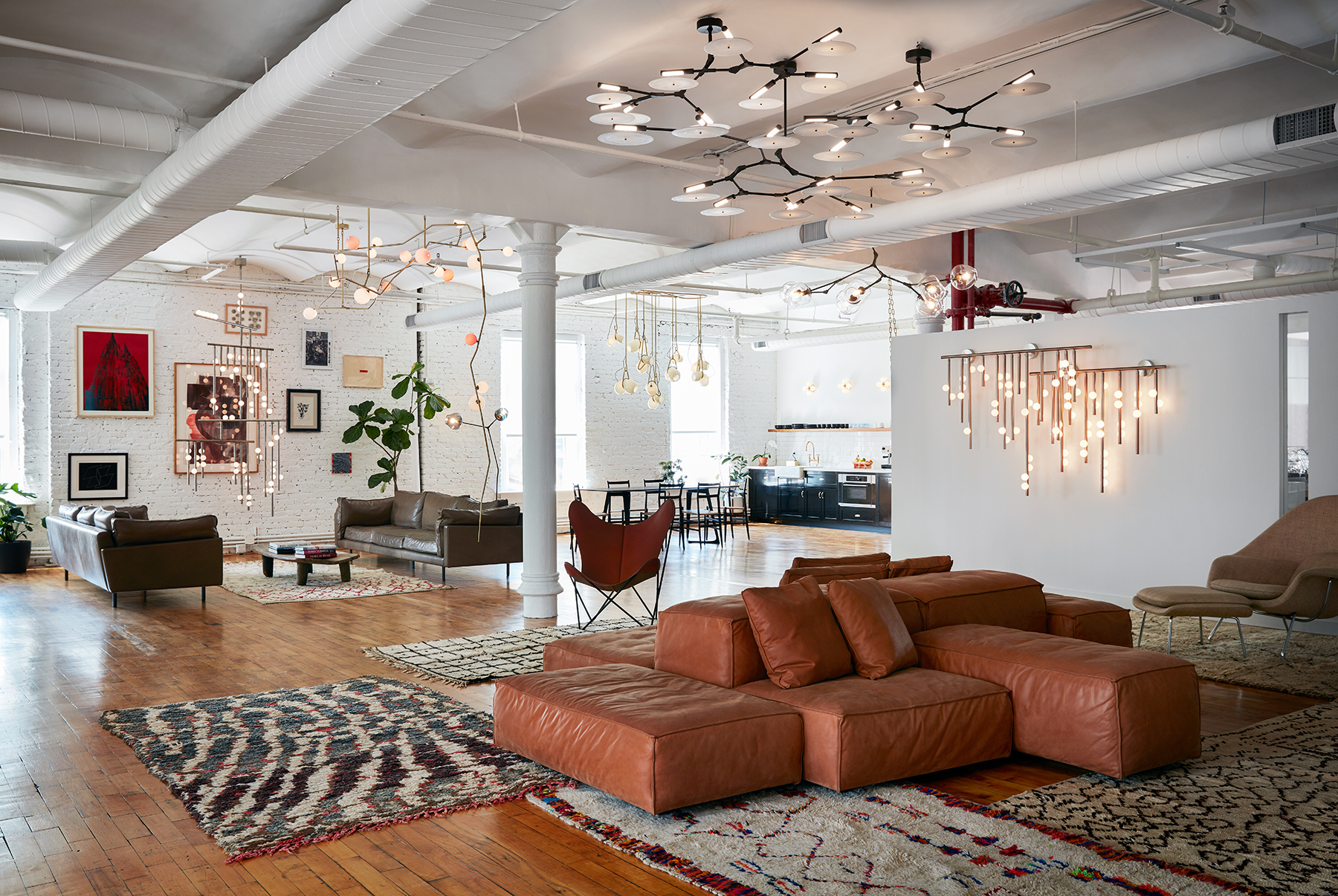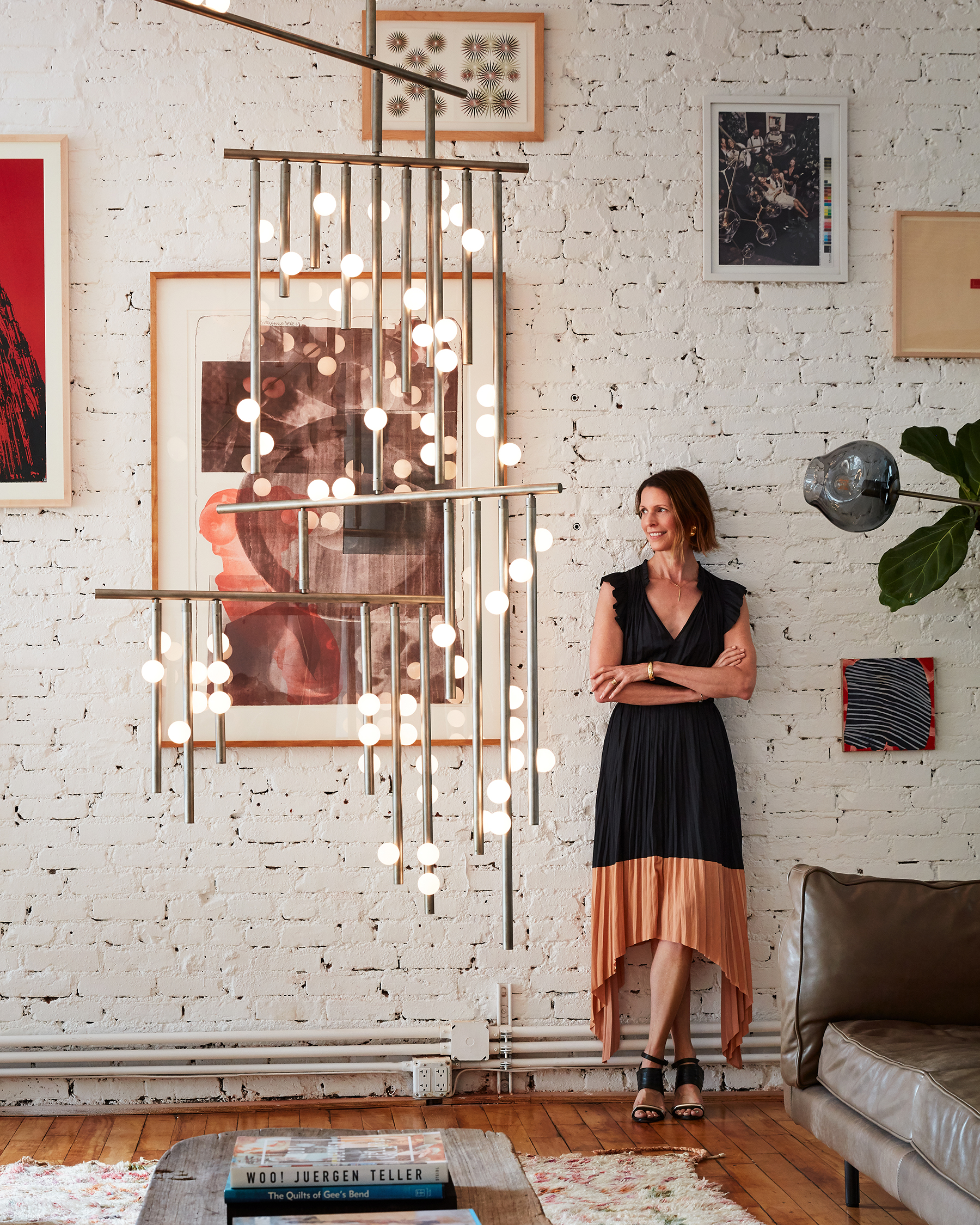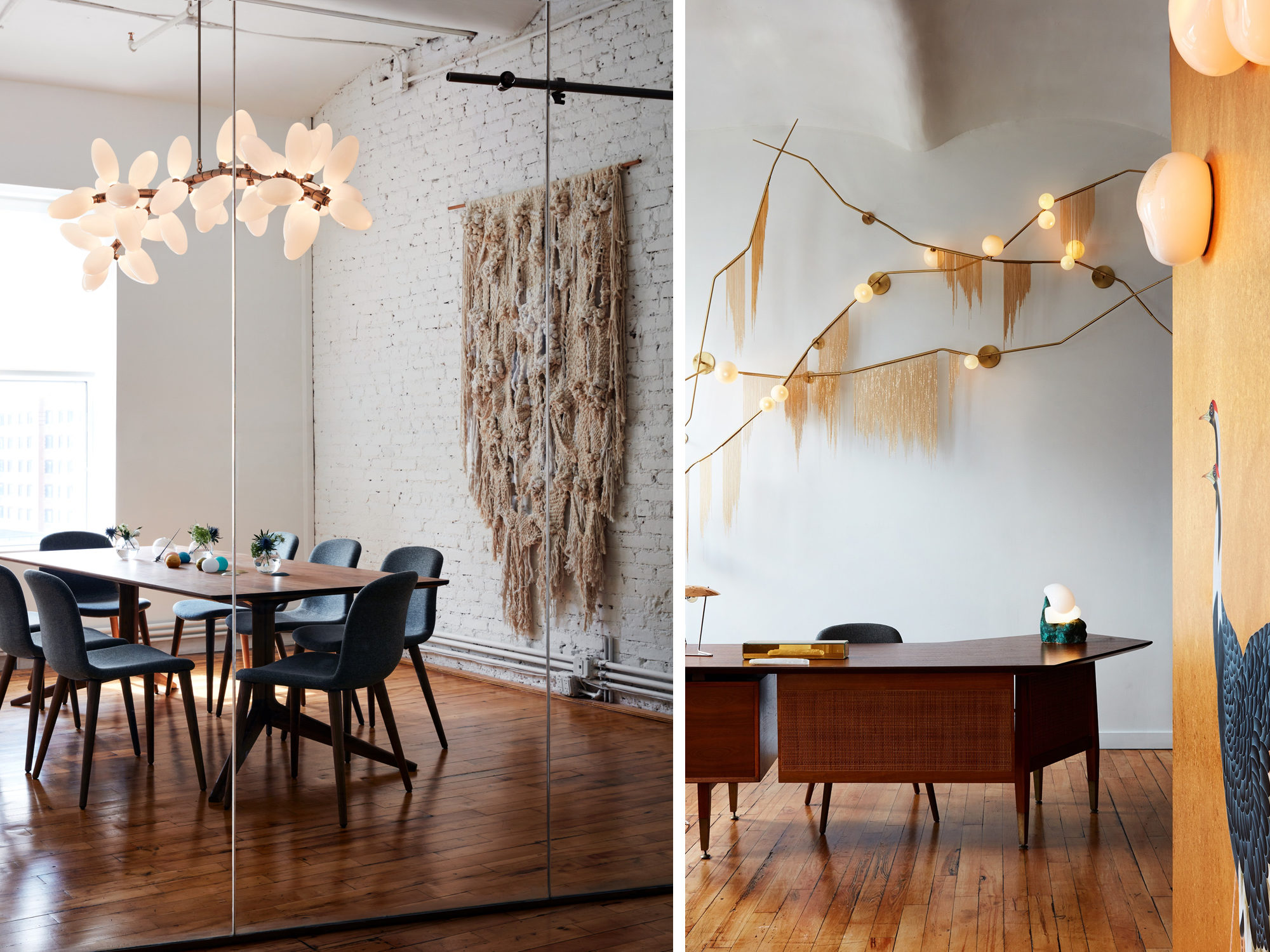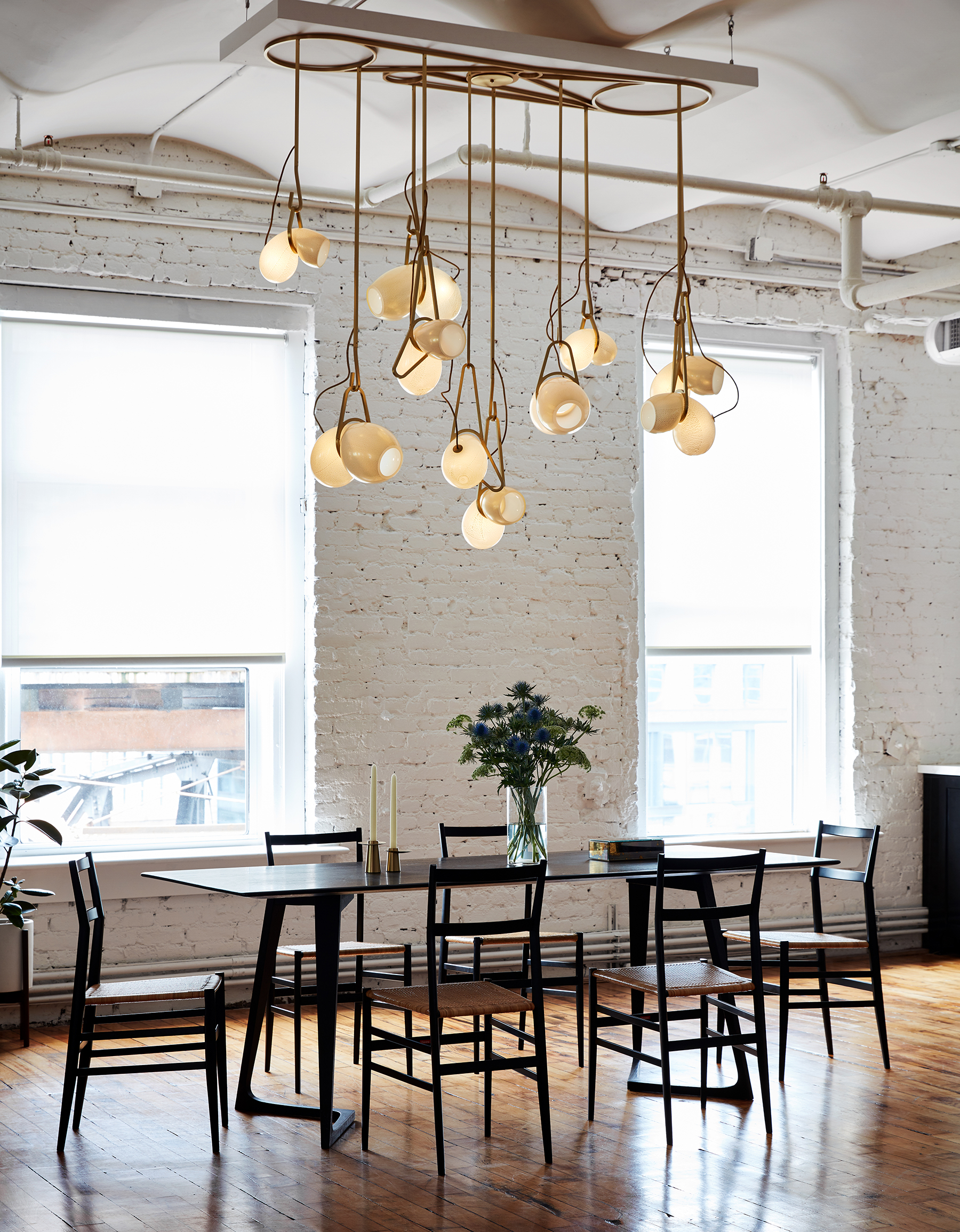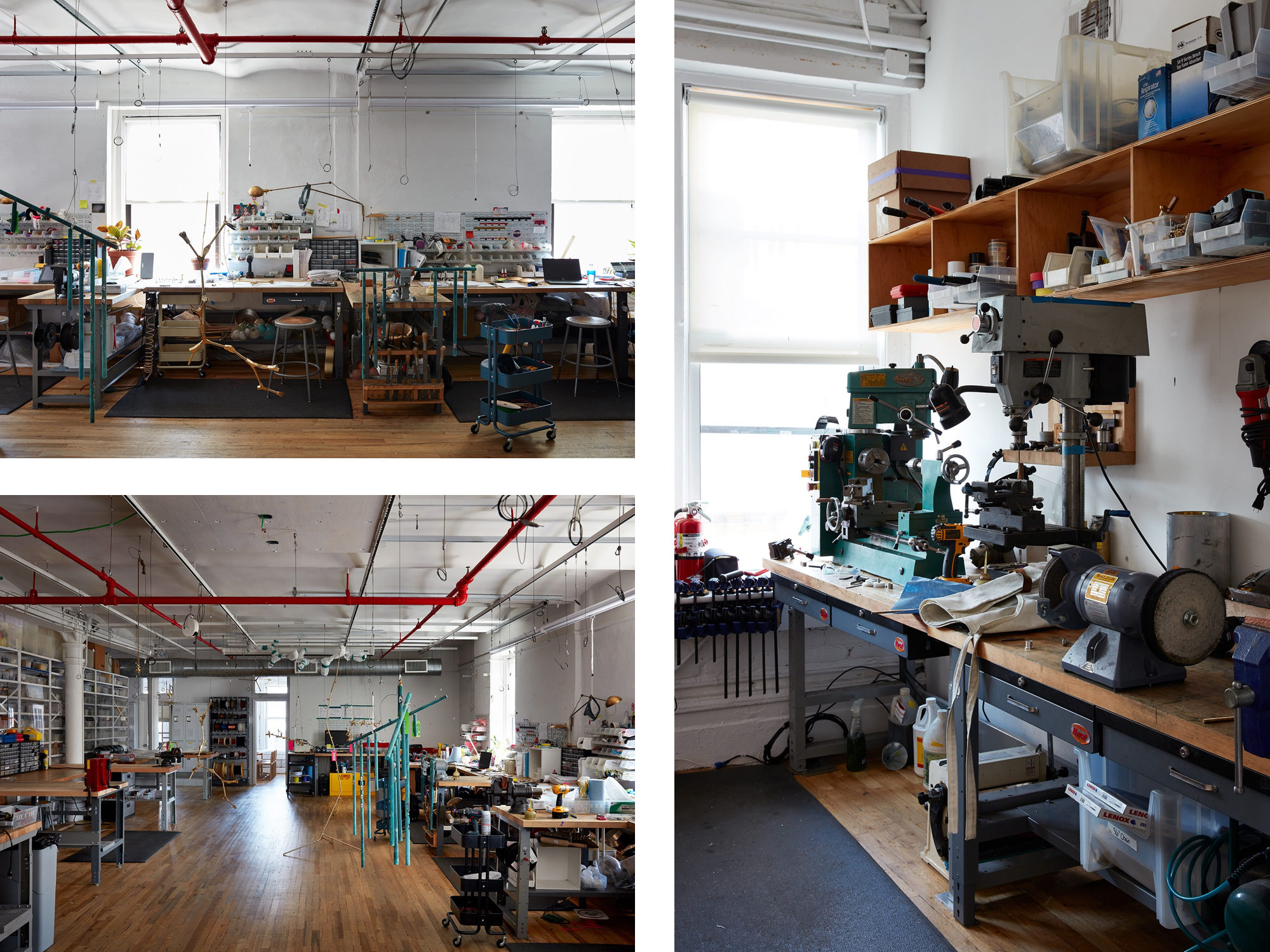“I like an atmosphere of serene and buzzy creativity,” Lindsey Adelman says during a private studio tour. She’s leading a walkthrough of her expansive new showroom in NoHo, Manhattan, which first welcomed visitors during NYCxDesign. Her team of 30 artisans, designers, and fabricators work intently nearby, each wearing a slate gray jumpsuit by sustainable Los Angeles fashion atelier Everybody. Intense morning sunlight pours in through south-facing windows, drenching the dreamy loft-like space with warmth and a sense of airiness. She seems to have achieved her target mood.
The studio is currently a no-photo zone—her team is wrapping up a new collection, called Paradise City, that will debut at Design Miami/Basel in June. “It feels like a true evolution and our best work to date,” Adelman says. That’s a lofty statement coming from a lighting designer whose name is synonymous with fusing hand-wrought organic materials such as blown glass with expertly engineered components. Her body of work effortlessly treads the line between lighting and sculpture, forging a sense of radiant warmth while underscoring the drama of negative space. It all began in 2006 when she debuted the now-emblematic Branching Bubble Chandelier, which carved out a distinct design language where nature is predominate but technology enhances its beauty.
That chandelier, along with dozens of newer pieces and prototypes, cast gentle glows within the new space while lending each individual vignette a burst of personality. A sprawling open-plan space on the seventh floor of a historic NoHo building, the new digs feel convivial, welcoming, and instantly calming—qualities few people associate with showrooms. “I wanted to set it up like my ideal loft and create rooms conducive for making things,” says Adelman, who sourced furniture from her friends at the Future Perfect, Fort Standard, and BDDW. These pieces, which can easily be cleared for events such as book signings, film screenings, and performances, help sustain that energy. “We’ve already kicked off our in-house staff yoga series,” she notes. “It’s been lovely here.”
Opening a more all-encompassing showroom is a logical next step for Adelman, who embarked on a Balinese yoga retreat instead of showing work during Milan Design Week this year. She’s returned feeling a newfound sense of centeredness, perhaps partially due to the convenience afforded by relocating. The 5,000-square-foot space sits one floor underneath her long-time studio, now home to her ceramics operations, which were formerly based in Industry City, Brooklyn. Her previous showroom, on the other hand, sat a few blocks north on Great Jones Street. Developing her ideas from concept to creation has become much less laborious.
The entire two-floor package now acts as an all-in-one creative laboratory where she and her team develop and test new ideas without the trials of distance. (Not that distance has ever really been an issue—Adelman recently opened a showroom in the Boston Design Center and launched a residency at the MAK Center for Art and Architecture in Los Angeles through November 2020.) But consolidating the studio’s workshops enables her to serve clients at the highest level while giving her more clarity of thought. “It’s easier to absorb an idea or a certain technology when you can see the material or process happening right in front of you.”

